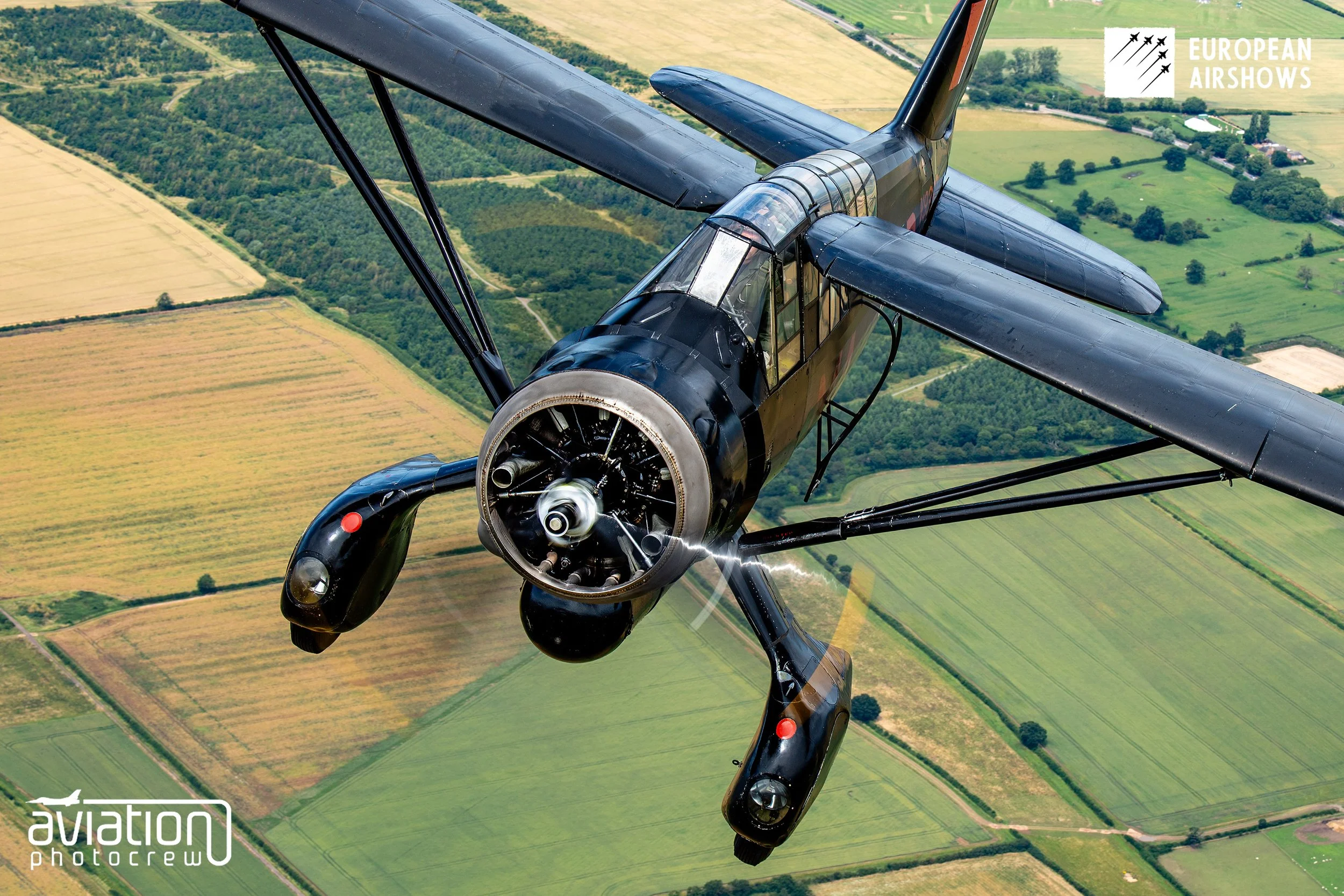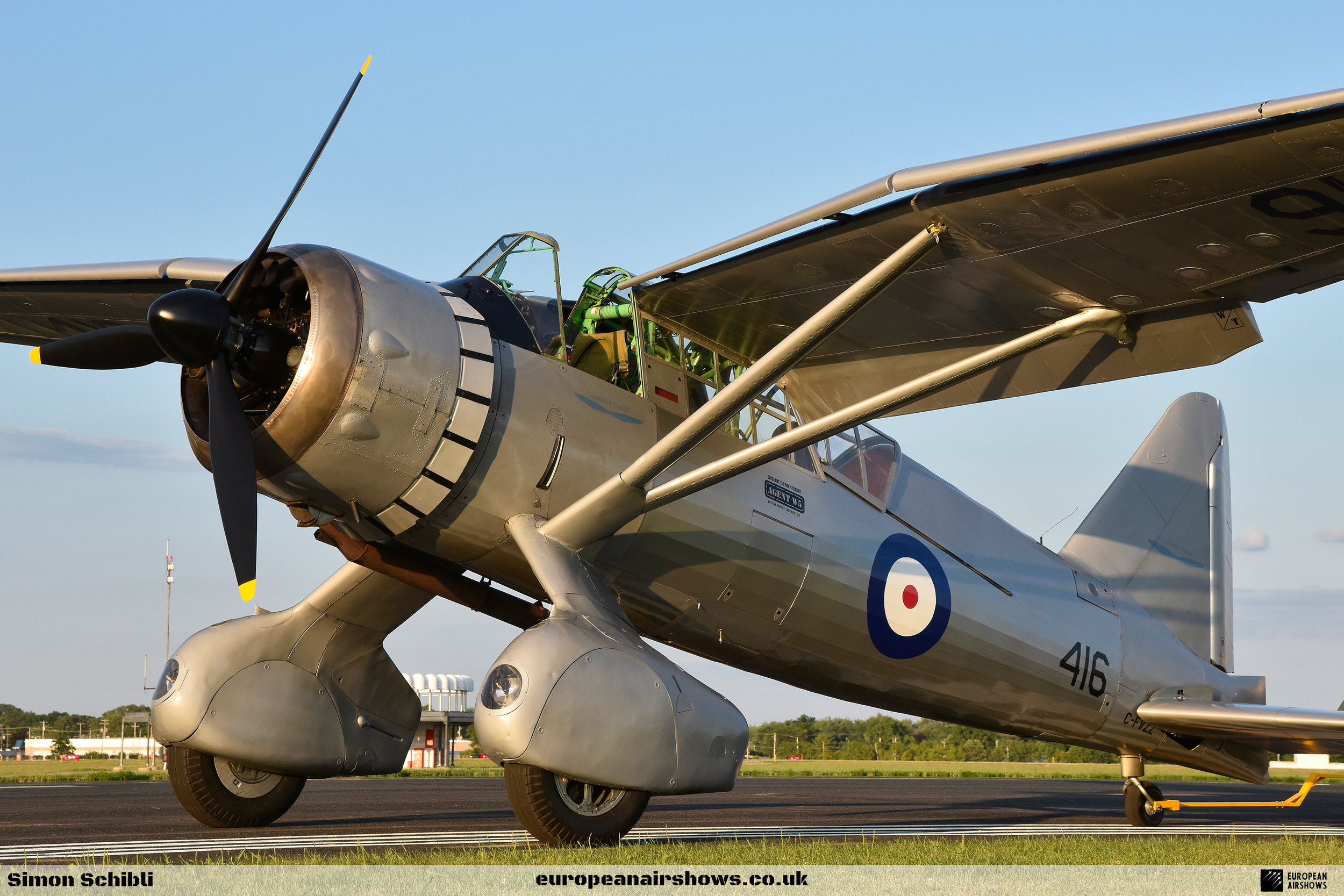
June 15 / Westland Lysander first flight
First Flight 15 June 1936
Westland Lysander
The Westland Lysander, developed in the late 1930s, is a legendary aircraft renowned for its exceptional short takeoff and landing (STOL) capabilities. It played a crucial role during World War II, primarily serving as a liaison and reconnaissance aircraft. Its ability to operate from small, unprepared airstrips made it invaluable for clandestine operations, including transporting agents, equipment, and supplies in and out of enemy territory. The aircraft's distinctive high-wing configuration and rugged design contributed to its versatility and success in various missions throughout the war.
Origins and Development:
The Westland Lysander was designed and built by Westland Aircraft in the United Kingdom during the late 1930s. The aircraft was developed to meet the requirements of the British Army Co-operation Command for a rugged and versatile reconnaissance and liaison aircraft capable of operating from unprepared airstrips and rough terrain.
First Flight and Introduction:
The prototype Westland Lysander made its maiden flight on June 15, 1936, showcasing its unique high-wing monoplane design and STOL (Short Takeoff and Landing) capabilities. The aircraft entered service with the Royal Air Force (RAF) in 1938, and it quickly gained a reputation for its exceptional performance in challenging operational environments.
Design Features:
The Westland Lysander was known for its distinctive appearance, featuring a high-wing configuration, fixed undercarriage, and a spacious cockpit that accommodated a pilot and an observer. The aircraft’s STOL capabilities were achieved through its large wings and leading-edge slats, allowing it to operate from small, unprepared airstrips with ease.
Operational Role:
During World War II, the Westland Lysander played a vital role in reconnaissance, special operations, and clandestine missions behind enemy lines. Equipped with cameras and capable of carrying supplies and personnel, the Lysander operated in support of resistance movements, conducted intelligence-gathering missions, and facilitated covert operations throughout Europe.
Special Operations:
One of the most famous roles of the Westland Lysander was its involvement in the delivery and retrieval of agents in occupied territories. Operating under the cover of darkness, the Lysander would land in remote fields to insert or extract agents, often under hazardous conditions and with the risk of detection by enemy forces.
Variants and Modifications:
Throughout its service life, the Westland Lysander underwent various modifications and upgrades to enhance its capabilities. These included changes to its armament, reconnaissance equipment, and communication systems to adapt to evolving operational requirements and technologies.
Legacy and Historical Significance:
The Westland Lysander’s legacy is one of bravery, ingenuity, and versatility. Its contributions to special operations, reconnaissance, and clandestine missions during World War II are widely celebrated, and the aircraft remains an iconic symbol of British aviation history.
Post-War Service and Preservation:
After World War II, the Westland Lysander continued to serve in various roles, including search and rescue and target towing. Today, a few restored Lysanders can still be seen flying at airshows and preserved in museums, honouring the aircraft’s remarkable legacy and historical significance.
Conclusion:
The Westland Lysander stands as a testament to the ingenuity and courage of its designers, crews, and the resistance fighters who relied on its capabilities during World War II. Its unique design, operational versatility, and historical contributions have secured its place as an iconic aircraft in aviation history.
Lysander Facts
Stealthy Design: The Westland Lysander was designed with a fabric-covered airframe and a unique geodetic construction that helped reduce its radar cross-section, making it stealthier than many other aircraft of its time.
STOL Capabilities: The Lysander’s Short Takeoff and Landing (STOL) capabilities allowed it to operate from small, unprepared airstrips, making it ideal for reconnaissance and special operations missions behind enemy lines.
Special Operations Role: The Westland Lysander played a crucial role in special operations during World War II, including inserting and extracting agents and supplies into and from occupied territories under cover of darkness.
Camouflage and Concealment: Lysanders were often painted in camouflage colors and equipped with special features like retractable landing lights and a concealed compartment for carrying agents, weapons, or supplies.
Versatile Armament: The Lysander was armed with various weapons, including machine guns, bombs, and even a rearward-firing Lewis machine gun for self-defense, making it capable of engaging ground targets when needed.
Silent Operations: The Lysander’s quiet engine and stealthy design made it well-suited for silent operations, allowing it to approach and depart from clandestine landing sites without alerting enemy forces.
Undercover Operations: Lysanders were used for undercover operations, such as dropping off or picking up secret agents in remote locations, often requiring precision flying and nerves of steel from the pilots.
Resistance Support: The Westland Lysander provided vital support to resistance movements in occupied territories, delivering supplies, weapons, and intelligence while maintaining a critical link between the resistance fighters and Allied forces.
Escape and Evasion: Lysanders were used for search and rescue missions, as well as for evacuating downed aircrew from behind enemy lines, highlighting the aircraft’s versatility in a variety of operational roles.
Historical Significance: The Westland Lysander’s contributions to special operations, reconnaissance, and clandestine missions during World War II have cemented its place in aviation history as an iconic and versatile aircraft that played a critical role in Allied victory.













